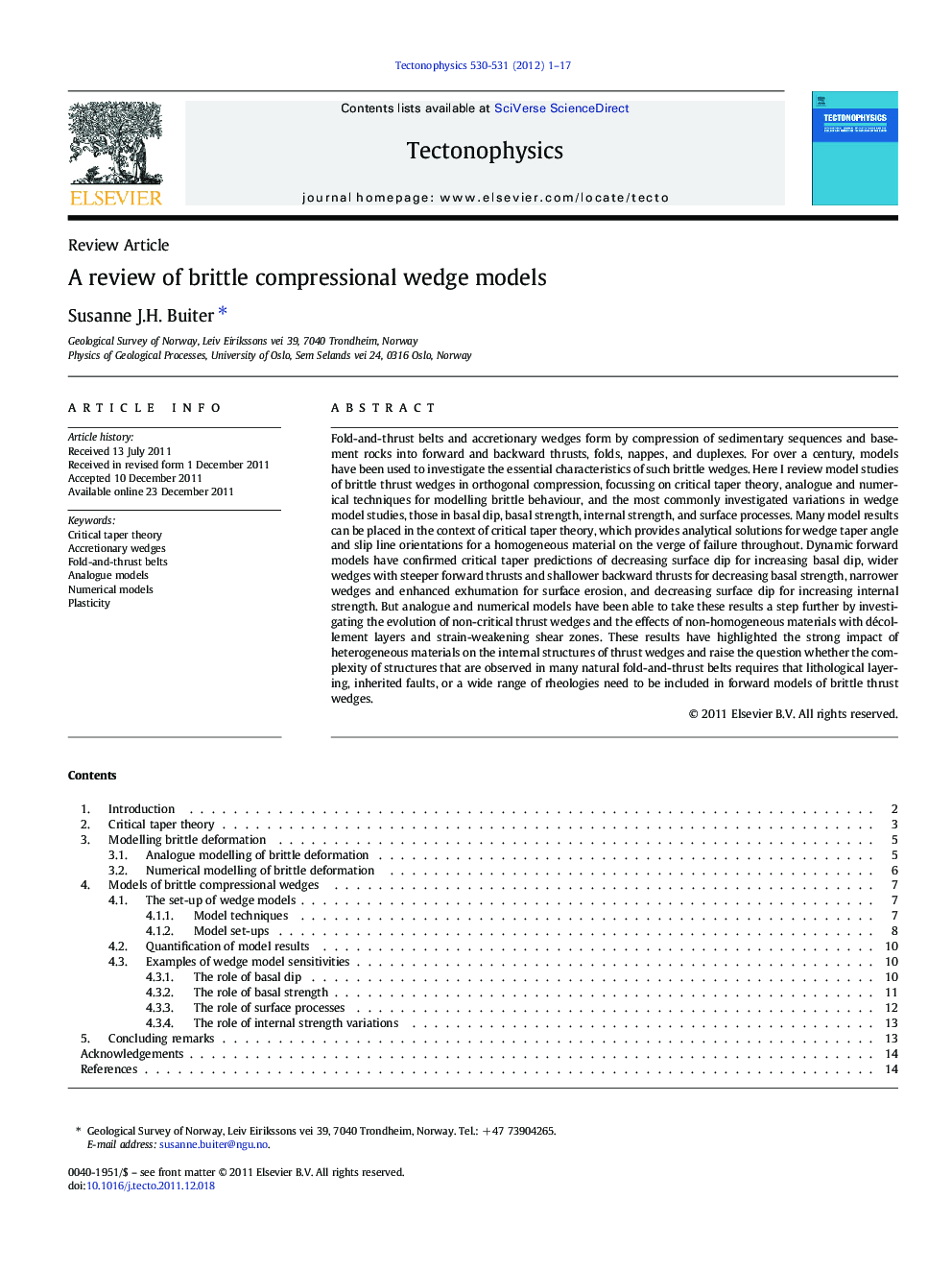| کد مقاله | کد نشریه | سال انتشار | مقاله انگلیسی | نسخه تمام متن |
|---|---|---|---|---|
| 6434256 | 1636827 | 2012 | 17 صفحه PDF | دانلود رایگان |

Fold-and-thrust belts and accretionary wedges form by compression of sedimentary sequences and basement rocks into forward and backward thrusts, folds, nappes, and duplexes. For over a century, models have been used to investigate the essential characteristics of such brittle wedges. Here I review model studies of brittle thrust wedges in orthogonal compression, focussing on critical taper theory, analogue and numerical techniques for modelling brittle behaviour, and the most commonly investigated variations in wedge model studies, those in basal dip, basal strength, internal strength, and surface processes. Many model results can be placed in the context of critical taper theory, which provides analytical solutions for wedge taper angle and slip line orientations for a homogeneous material on the verge of failure throughout. Dynamic forward models have confirmed critical taper predictions of decreasing surface dip for increasing basal dip, wider wedges with steeper forward thrusts and shallower backward thrusts for decreasing basal strength, narrower wedges and enhanced exhumation for surface erosion, and decreasing surface dip for increasing internal strength. But analogue and numerical models have been able to take these results a step further by investigating the evolution of non-critical thrust wedges and the effects of non-homogeneous materials with décollement layers and strain-weakening shear zones. These results have highlighted the strong impact of heterogeneous materials on the internal structures of thrust wedges and raise the question whether the complexity of structures that are observed in many natural fold-and-thrust belts requires that lithological layering, inherited faults, or a wide range of rheologies need to be included in forward models of brittle thrust wedges.
⺠A review of analytical, analogue, and numerical brittle thrust wedge models. ⺠Critical taper theory explains many first-order analogue and numerical results. ⺠Forward dynamic models show the importance of non-critical wedge behaviour. ⺠Complex structures can result from surface processes and heterogeneous materials.
Journal: Tectonophysics - Volumes 530â531, 20 March 2012, Pages 1-17